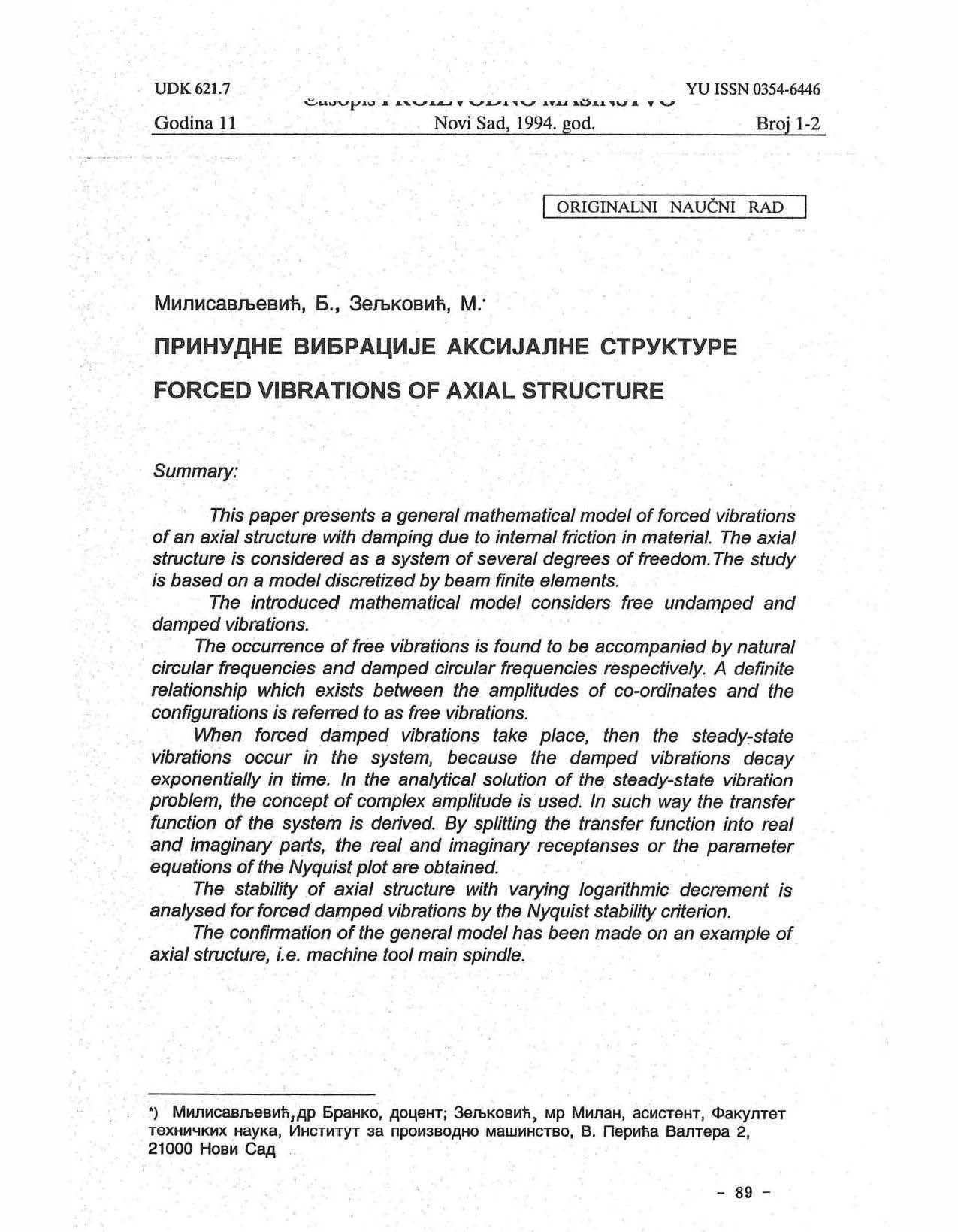
Published 1994-12-01
abstract views: 174 // FULL TEXT ARTICLE (PDF): 107
Keywords
- mathematical model,
- forced vibrations
How to Cite
Copyright (c) 2023 Journal of Production Engineering

This work is licensed under a Creative Commons Attribution 4.0 International License.
Abstract
This paper presents a general mathematical model of forced vibrations of an axial structure with damping due to internal friction in material. The axial structure is considered as a system of several degrees of freedom, The study is based on a model discretized by beam finite elements. The introduced mathematical model considers free undamped and damped vibrations. The occurrence of free vibrations is found to be accompanied by natural circular frequencies and damped circular frequencies respectively. A definite relationship which exists between the amplitudes of co-ordinates and the configurations is referred to as free vibrations. When forced damped vibrations take place, then the steady-state vibrations occur in the system, because the damped vibrations decay exponentially in time. In the analytical solution of the steady-state vibration problem, the concept of complex amplitude is used. In such way the transfer function of the system is derived. By splitting the transfer function into real and imaginary parts, the real and imaginary receptanses or the parameter equations of the Nyquist plot are obtained. The stability of axial structure with varying logarithmic decrement is analysed for forced damped vibrations by the Nyquist stability criterion. The confirmation of the general model has been made on an example of axial structure, i.e. machine tool main spindle.

